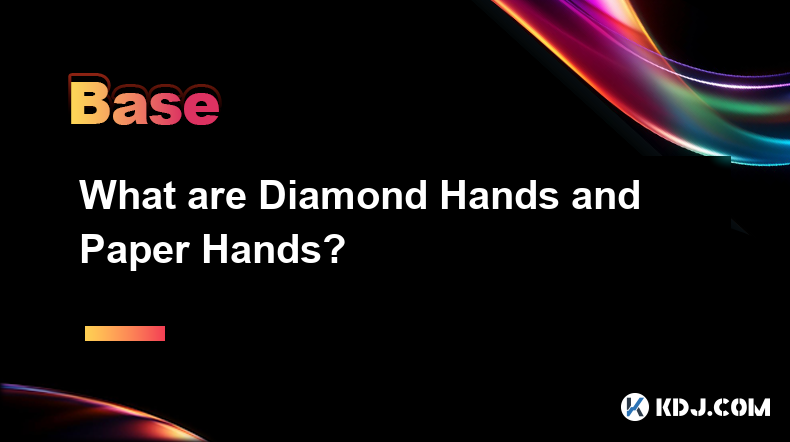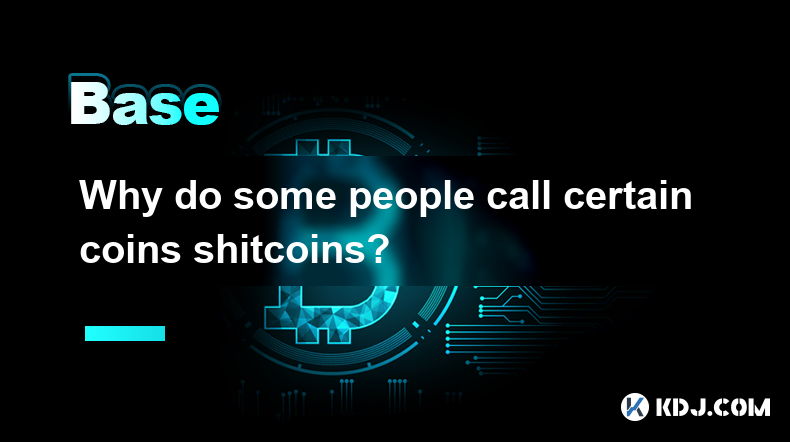-
 Bitcoin
Bitcoin $84,485.5563
0.59% -
 Ethereum
Ethereum $1,590.6823
-0.32% -
 Tether USDt
Tether USDt $1.0000
0.00% -
 XRP
XRP $2.1012
0.11% -
 BNB
BNB $584.9285
0.55% -
 Solana
Solana $132.4498
4.29% -
 USDC
USDC $1.0000
0.00% -
 TRON
TRON $0.2490
-0.74% -
 Dogecoin
Dogecoin $0.1561
0.76% -
 Cardano
Cardano $0.6154
0.48% -
 UNUS SED LEO
UNUS SED LEO $9.4096
0.49% -
 Chainlink
Chainlink $12.4516
1.17% -
 Avalanche
Avalanche $18.8975
-1.36% -
 Toncoin
Toncoin $2.9231
2.31% -
 Stellar
Stellar $0.2376
0.03% -
 Shiba Inu
Shiba Inu $0.0...01194
1.77% -
 Sui
Sui $2.0784
-1.51% -
 Hedera
Hedera $0.1591
0.93% -
 Bitcoin Cash
Bitcoin Cash $323.1252
1.52% -
 Litecoin
Litecoin $74.8888
-1.45% -
 Polkadot
Polkadot $3.5938
1.52% -
 Hyperliquid
Hyperliquid $16.2067
7.10% -
 Dai
Dai $1.0001
-0.01% -
 Bitget Token
Bitget Token $4.3101
0.95% -
 Ethena USDe
Ethena USDe $0.9992
0.00% -
 Pi
Pi $0.6085
-4.92% -
 Monero
Monero $218.0762
0.63% -
 Uniswap
Uniswap $5.1908
-0.21% -
 OKB
OKB $51.6168
0.48% -
 Pepe
Pepe $0.0...07235
3.30%
What is Chain Reorganization?
Chain reorganization in blockchain tech can replace accepted blocks, causing transaction uncertainty and network instability, but strategies like checkpoints can mitigate impacts.
Apr 08, 2025 at 03:08 pm

What is Chain Reorganization?
Chain reorganization, often referred to as a "reorg," is a fundamental concept in blockchain technology that can significantly impact the integrity and operation of a blockchain network. Chain reorganization occurs when a blockchain network replaces a previously accepted block or series of blocks with a new set of blocks, leading to a change in the accepted version of the blockchain's history. This phenomenon is more common in cryptocurrencies that use Proof of Work (PoW) consensus mechanisms, such as Bitcoin and Ethereum (prior to its transition to Proof of Stake).
Understanding the Mechanics of Chain Reorganization
To grasp how chain reorganization happens, it's essential to understand the basics of blockchain consensus. In a PoW system, miners compete to solve complex mathematical puzzles to add new blocks to the blockchain. The first miner to solve the puzzle gets to add a block and is rewarded with cryptocurrency. The longest chain of blocks is generally considered the valid chain, as it represents the most cumulative proof of work.
Chain reorganization can occur when two miners solve the puzzle almost simultaneously, leading to a temporary fork in the blockchain. If one of these blocks is added to the chain before the other, the network will initially accept the first block. However, if the second block is later found to be part of a longer chain, the network may undergo a reorganization to accept the longer chain as the valid one. This process involves discarding the previously accepted block and replacing it with the new block or blocks from the longer chain.
Causes of Chain Reorganization
Several factors can lead to chain reorganizations. One common cause is network latency, where miners in different parts of the world may not immediately see the same version of the blockchain. This can result in miners working on different versions of the blockchain, leading to temporary forks that may later be resolved through reorganization.
Another cause is the deliberate manipulation of the blockchain, often referred to as a 51% attack. In such an attack, a group of miners controlling more than half of the network's mining power can intentionally create a longer chain to override the existing one. This can lead to significant reorganizations, potentially allowing the attackers to double-spend coins or disrupt the network.
Impact of Chain Reorganization on Users and the Network
Chain reorganizations can have various impacts on users and the overall network. For users, a reorganization can lead to transaction uncertainty. If a transaction is included in a block that is later discarded during a reorganization, the transaction may need to be rebroadcast and confirmed again. This can lead to delays and potential confusion for users who are not familiar with the intricacies of blockchain technology.
For the network, frequent reorganizations can undermine trust and stability. If users perceive the blockchain as unreliable due to frequent changes in its history, they may be less likely to use it for transactions. This can lead to a decrease in the network's value and utility.
Preventing and Mitigating Chain Reorganization
While chain reorganizations are an inherent part of PoW blockchains, there are strategies to minimize their frequency and impact. One approach is to increase the block confirmation time, which can reduce the likelihood of temporary forks. For example, Bitcoin's block time is set at approximately 10 minutes, which helps to stabilize the network by giving miners more time to agree on the valid chain.
Another strategy is to implement checkpoints, which are pre-defined points in the blockchain's history that are considered immutable. By setting checkpoints, developers can prevent reorganizations that go back beyond a certain point, thereby increasing the stability of the network.
Real-World Examples of Chain Reorganization
To illustrate the concept of chain reorganization, let's look at a few real-world examples. In 2013, the Bitcoin network experienced a significant reorganization when a block was orphaned due to a temporary fork. This event led to a brief period of uncertainty as the network adjusted to the new valid chain.
Another notable example occurred in 2016 on the Ethereum network, when a reorganization led to the reversal of a large number of transactions. This event highlighted the potential risks of chain reorganizations and prompted discussions about the need for more robust consensus mechanisms.
Technical Details of Chain Reorganization
To delve deeper into the technical aspects of chain reorganization, it's helpful to understand the process at a more granular level. When a reorganization occurs, nodes on the network must update their local copy of the blockchain. This involves several steps:
- Identifying the new valid chain: Nodes must first identify the longer chain that has caused the reorganization.
- Validating the new blocks: Nodes then validate the new blocks to ensure they meet the network's consensus rules.
- Updating the blockchain: Once the new blocks are validated, nodes update their local copy of the blockchain to reflect the new valid chain.
- Replaying transactions: If any transactions were included in the discarded blocks, nodes must replay these transactions on the new chain to ensure they are properly processed.
Chain Reorganization in Different Consensus Mechanisms
While chain reorganization is most commonly associated with PoW blockchains, it can also occur in other consensus mechanisms, albeit in different forms. In Proof of Stake (PoS) systems, reorganizations can occur due to changes in validator stakes or the selection of validators. For example, Ethereum's transition to PoS with Ethereum 2.0 introduced new considerations for chain reorganizations, as the network now relies on validators rather than miners.
In Delegated Proof of Stake (DPoS) systems, reorganizations can be influenced by the voting power of delegates. If a delegate's voting power changes significantly, it can lead to a reorganization of the blockchain to reflect the new consensus.
Frequently Asked Questions
Q: How can users protect themselves from the risks of chain reorganization?
A: Users can protect themselves by waiting for multiple confirmations before considering a transaction final. For example, in Bitcoin, waiting for at least six confirmations can significantly reduce the risk of a transaction being reversed due to a reorganization.
Q: Can chain reorganizations be completely prevented?
A: While it's not possible to completely prevent chain reorganizations in PoW systems, their frequency and impact can be minimized through strategies like increasing block confirmation times and implementing checkpoints.
Q: How do chain reorganizations affect the security of a blockchain?
A: Chain reorganizations can temporarily undermine the security of a blockchain by introducing uncertainty about the validity of transactions. However, robust consensus mechanisms and network protocols can help mitigate these risks and maintain the overall security of the blockchain.
Q: Are there any tools or services that can help users monitor chain reorganizations?
A: Yes, there are several blockchain explorers and monitoring services that provide real-time data on chain reorganizations. These tools can help users stay informed about the state of the blockchain and any changes that may affect their transactions.
Disclaimer:info@kdj.com
The information provided is not trading advice. kdj.com does not assume any responsibility for any investments made based on the information provided in this article. Cryptocurrencies are highly volatile and it is highly recommended that you invest with caution after thorough research!
If you believe that the content used on this website infringes your copyright, please contact us immediately (info@kdj.com) and we will delete it promptly.
- American households became wealthier overall in 2024, but high-net-worth individuals with $5 million or more in assets did disproportionately well
- 2025-04-17 06:40:13
- Another week, another modest tipping result – 4 out of 8 this time
- 2025-04-17 06:40:13
- What do Binance’s recent outages, token volatility, and legal disputes tell us about the broader challenges it faces across different regions?
- 2025-04-17 06:35:14
- Phase Change Ahead: Arctic Pablo Coin (APC) at $0.000095 Won't Stick Around– Best Crypto to Invest in 2025
- 2025-04-17 06:35:14
- 3iQ Corp. Announces 2025 Annual Redemption for The Bitcoin Fund
- 2025-04-17 06:35:13
- What if the next crypto move didn't just fill your wallet but changed your digital reality?
- 2025-04-17 06:35:13
Related knowledge

What does Floor Price mean in the NFT market
Apr 17,2025 at 12:42am
The term Floor Price is a critical concept within the NFT (Non-Fungible Token) market, serving as a key indicator for both buyers and sellers. In essence, the floor price represents the lowest price at which an NFT from a particular collection is currently listed for sale on a marketplace. This price point is crucial for understanding the perceived valu...

What is Alpha? How to find Alpha opportunities?
Apr 16,2025 at 12:42pm
What is Alpha?Alpha is a term widely used in the financial world, including the cryptocurrency market, to describe the ability of an investment to outperform a benchmark. In the context of cryptocurrencies, alpha refers to the excess return an investor achieves over the market's average return. For example, if the overall crypto market grows by 10% in a...

Why do cryptocurrency enthusiasts like to say GM?
Apr 16,2025 at 06:21am
In the world of cryptocurrency, the term 'GM' has become a popular greeting among enthusiasts. GM stands for 'Good Morning,' and its widespread use within the crypto community has a deeper significance than just a simple greeting. This article delves into the reasons why cryptocurrency enthusiasts like to say GM, exploring its origins, cultural signific...

What do WAGMI and NGMI mean?
Apr 16,2025 at 08:08pm
In the world of cryptocurrency, you might often come across the acronyms WAGMI and NGMI. These terms have become part of the crypto slang and are frequently used in discussions, tweets, and forums related to digital currencies. Let's delve into what these terms mean, their origins, and how they are used within the crypto community. Understanding WAGMIWA...

What are Diamond Hands and Paper Hands?
Apr 16,2025 at 10:42am
In the world of cryptocurrencies, the terms Diamond Hands and Paper Hands are frequently used to describe the behavior and mindset of investors, particularly in volatile markets. These terms originated from online communities and have become a significant part of the crypto lexicon, often used to describe the level of resilience and commitment an invest...

Why do some people call certain coins shitcoins?
Apr 17,2025 at 03:21am
Understanding the Term 'Shitcoin'The term 'shitcoin' is a colloquialism within the cryptocurrency community that is used to describe cryptocurrencies that are perceived as having little to no value or potential. It is a derogatory term, often used to express disdain or skepticism about the viability of certain digital assets. The use of 'shitcoin' is su...

What does Floor Price mean in the NFT market
Apr 17,2025 at 12:42am
The term Floor Price is a critical concept within the NFT (Non-Fungible Token) market, serving as a key indicator for both buyers and sellers. In essence, the floor price represents the lowest price at which an NFT from a particular collection is currently listed for sale on a marketplace. This price point is crucial for understanding the perceived valu...

What is Alpha? How to find Alpha opportunities?
Apr 16,2025 at 12:42pm
What is Alpha?Alpha is a term widely used in the financial world, including the cryptocurrency market, to describe the ability of an investment to outperform a benchmark. In the context of cryptocurrencies, alpha refers to the excess return an investor achieves over the market's average return. For example, if the overall crypto market grows by 10% in a...

Why do cryptocurrency enthusiasts like to say GM?
Apr 16,2025 at 06:21am
In the world of cryptocurrency, the term 'GM' has become a popular greeting among enthusiasts. GM stands for 'Good Morning,' and its widespread use within the crypto community has a deeper significance than just a simple greeting. This article delves into the reasons why cryptocurrency enthusiasts like to say GM, exploring its origins, cultural signific...

What do WAGMI and NGMI mean?
Apr 16,2025 at 08:08pm
In the world of cryptocurrency, you might often come across the acronyms WAGMI and NGMI. These terms have become part of the crypto slang and are frequently used in discussions, tweets, and forums related to digital currencies. Let's delve into what these terms mean, their origins, and how they are used within the crypto community. Understanding WAGMIWA...

What are Diamond Hands and Paper Hands?
Apr 16,2025 at 10:42am
In the world of cryptocurrencies, the terms Diamond Hands and Paper Hands are frequently used to describe the behavior and mindset of investors, particularly in volatile markets. These terms originated from online communities and have become a significant part of the crypto lexicon, often used to describe the level of resilience and commitment an invest...

Why do some people call certain coins shitcoins?
Apr 17,2025 at 03:21am
Understanding the Term 'Shitcoin'The term 'shitcoin' is a colloquialism within the cryptocurrency community that is used to describe cryptocurrencies that are perceived as having little to no value or potential. It is a derogatory term, often used to express disdain or skepticism about the viability of certain digital assets. The use of 'shitcoin' is su...
See all articles























































































